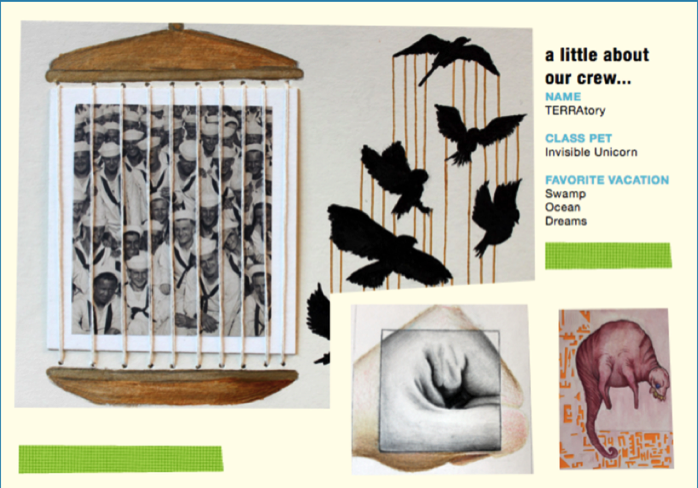
-Visual Arts
The Fine Arts classroom moves beyond one dimensional instruction and into a productive and complex interdisciplinary context. The program prepares students for further studies should they choose to make the fine arts a career; and to be an informed viewer with refined audio and visual perception to enrich a creative life. We nurture alternative ways of knowing and learning, and serve the widely divergent needs of all students.
RULES:
1.FOLLOW DIRECTIONS
2.STAY IN YOUR SEAT
3.WORK QUIETLY
4.RAISE YOUR HAND
5.TAKE CARE OF SUPPLIES
REWARDS
1.VERBAL PRAISE
2.ASSISTANT
3.SPECIAL ART PROJECTS
4.IPAD/digital art and/or your own art
CONSEQUENCES
1.VERBAL WARNING
2.REMOVED FROM GROUP
3.CONTACT HOME
4.REFER TO ADMINISTRATION
***Electronic devices may only be used for art reference ideas.***
(no filming, movies/streaming, games, text, socials, etc. The use of a device can affect your grade)
ABSENCE:THE STUDENT IS RESPONSIBLE FOR MAKING UP ANY WORK MISSED DUE TO AN ABSENCE. IT IS THE STUDENT’S RESPONSIBILITY TO GET ANY WORK MISSED.
TARDY: STUDENTS SHOULD BE IN THEIR SEATS WHEN THE BELL RINGS. IF STUDENT IS LATE FOR CLASS A PASS MUST BE GIVEN TO TEACHER AND WILL BE MARKED IN GRADE BOOK.
GRADING:
OBSERVATION GRADE, THIS GRADE IS BASED ON STUDENT’S PERFORMANCE OBSERVED BY THE TEACHER IN CLASS. THIS EVALUATION COMES FROM PARTICIPATION, ATTENTION, INTEREST, ATTITUDE, AND PROPER USE OF FOLLOWING DIRECTIONS. (40%)
SKILLS GRADE, DEMONSTRATES GOOD CRAFTSMANSHIP, USES TOOLS AND MATERIALS IN A SAFE AND CONSTRUCTIVE MANNER. (35%)
WRITTEN GRADE, ASSIGNMENTS, HANDOUTS GIVEN IN CLASS. HOMEWORK ASSIGNMENTS MAY BE GIVEN ON A WEEKLY BASIS. (25%)
ACADEMIC GRADING SCALE:
A= OUTSTANDING PROGRESS
B= ABOVE AVERAGE PROGRESS
C= AVERAGE PROGRESS
D= LOWEST ACCEPTABLE PROGRESS
F= FAILURE
ART GOALS
Aesthetic and Critical Inquiry
As a learning outcome students can:
-- use appropriate terminology in written and verbal form
-- participate in the critique process
-- describe, analyze, interpret, and judge artworks
Cultural and Historic Context
As a learning outcome students can:
-- use appropriate terminology in written and verbal form
-- understand a work of art in terms of time, place, and culture
-- understand artistic movements/periods
-- understand a work of art in terms of ethnicity/gender
-- become aware of possible career options
Studio Skills
As a learning outcome students can:
-- produce original works of art
-- manipulate a variety of media, tools, and techniques
-- apply the elements and principles of design
-- plan and organize a series of steps
-- experiment, discover, and invent
-- utilize technology and practice craftsmanship
Personal Development
As a learning outcome students can:
-- demonstrate a commitment to art
-- maintain a sketchbook/journal
-- value work and respect materials
-- work both independently and cooperatively in a studio setting
-- participate actively in art events, exhibits, and programs



